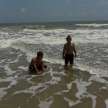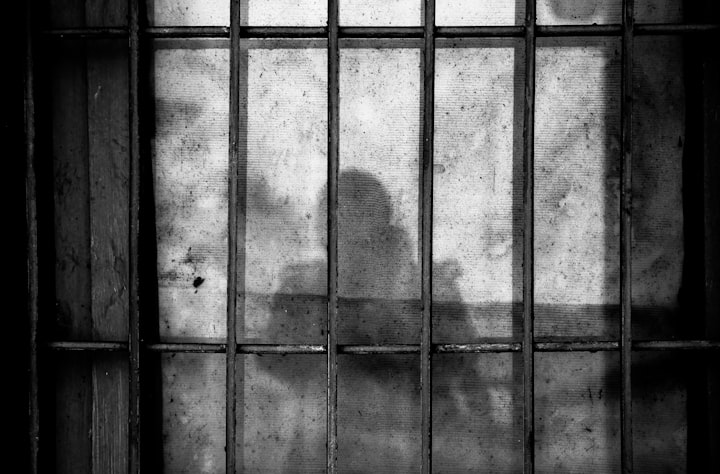
In the annals of American history, the Johnstown Flood of 1889 stands as a haunting reminder of a catastrophe that claimed over 2,200 lives and left an indelible mark on the town of Johnstown, Pennsylvania. What makes this tragedy even more astonishing is the fact that it was caused by the actions of some of America's wealthiest businessmen, including the infamous Henry Clay Frick. In this detailed exploration, we unravel the chain of events that led to the catastrophic failure of the South Fork Dam, the privatization of Lake Conemaugh, and the devastating consequences that befell the unsuspecting residents of Johnstown.
In the mid-19th century, the Commonwealth of Pennsylvania undertook the construction of the South Fork Dam as part of a cross-state canal system between 1838 and 1853. However, with the rise of trains as the primary mode of transportation, the state decided to privatize the dam and the reservoir behind it, Lake Conemaugh. Enter Henry Clay Frick and a consortium of wealthy speculators, who saw an opportunity to transform the reservoir into an exclusive mountain retreat for the elite.
Frick and his associates formed the South Fork Fishing and Hunting Club, a private enclave that attracted more than 50 affluent industrialists from Pittsburgh, including those involved in steel, coal, and railroad industries. Cottages and a grand clubhouse were erected, creating an exclusive haven for the privileged. However, to suit their needs, significant alterations were made to the dam, setting the stage for the tragedy that would unfold.
To accommodate the new inhabitants and their pursuits, Frick and his investors made critical modifications to the dam. They lowered its height to create a wide road at the top and installed a fish screen in the spillway, which also acted as a debris trap. Negligently, they failed to replace the old relief pipes intended to discharge excess water. These pipes, sold for scrap earlier, were crucial safety features that, when missing, made the dam vulnerable to catastrophic failure.
On the morning of May 31, 1889, Elias Unger, president of the South Fork Fishing and Hunting Club, awoke to a sight that would foreshadow disaster. Heavy rainfall throughout the night had swelled Lake Conemaugh, and Unger observed the water nearing the crest of the dam. Recognizing the imminent threat, he gathered a group of men to address the situation. Unfortunately, the spillway was blocked by a broken fish trap and debris, a consequence of the swollen waterline.
As the rain continued to pour, Unger and his men valiantly tried to unclog the spillway in a desperate attempt to save the dam. However, the obstruction proved insurmountable. The broken fish trap and debris, combined with the absence of relief pipes, sealed the fate of the South Fork Dam. At the moment of truth, the dam succumbed to the pressure, unleashing a torrent of 3.84 billion gallons of water on the unsuspecting town of Johnstown.
The catastrophic failure of the dam resulted in an unprecedented deluge that swept away trains, buildings, and any obstacle in its path. The Gautier Wire Works, caught in the path of destruction, exploded when the floodwaters hit the factory's boilers. The force of the water wreaked havoc on the town, leading to the tragic deaths of over 2,200 people. The Johnstown Flood had become one of the deadliest natural disasters in United States history.
In the aftermath of the flood, the South Fork Fishing and Hunting Club faced rightful blame for the disaster. Accusations of improperly maintaining the dam led to a court trial, but the Club, defended by the firm of Knox and Reed—whose partners were Club members—escaped legal responsibility. The court deemed the dam break an "Act of God," denying survivors any legal compensation.
While the South Fork Fishing and Hunting Club evaded legal consequences, individual members, including Henry Clay Frick, donated several thousand dollars to the flood survivors. However, the meager charity offered by those whose actions led to $17 million in damages (equivalent to about $450 million in 2015 dollars) highlighted the stark disparity between the elite and the suffering masses. Frick's involvement in the Homestead Steel Strike further fueled public resentment.
In 1892, an anarchist attempted to assassinate Henry Clay Frick in response to his role in the Homestead Steel Strike. Frick, known for bringing in armed Pinkerton agents to shoot strikers, became a target for retribution. The attempt, involving a gunshot to the neck and repeated stabbings with a sharpened file, only served to turn public opinion
against the striking workers. The repercussions included job losses and wage cuts, further underscoring the power dynamics of the time.
Henry Clay Frick's life continued to be marked by controversy until his death on December 2, 1919, weeks before his 70th birthday. Meanwhile, the last known survivor of the 1889 flood, Frank Shomo, passed away on March 20, 1997, at the remarkable age of 108. The legacies of those involved in the Johnstown Flood remain entwined with a complex narrative of privilege, tragedy, and the enduring quest for justice.
The Johnstown Flood stands as a poignant chapter in American history, revealing the perils of privatization and the consequences of unchecked power. The South Fork Dam, once part of a public works project, became a symbol of exclusivity, neglect, and tragedy when placed in the hands of private investors. The aftermath of the flood underscores the importance of accountability and the enduring quest for justice in the face of disaster. As we reflect on the events of May 31, 1889, the lessons learned from the Johnstown Flood continue to resonate, urging us to remain vigilant against the dangers of negligence, inequality, and the unchecked influence of the powerful.






Comments
There are no comments for this story
Be the first to respond and start the conversation.